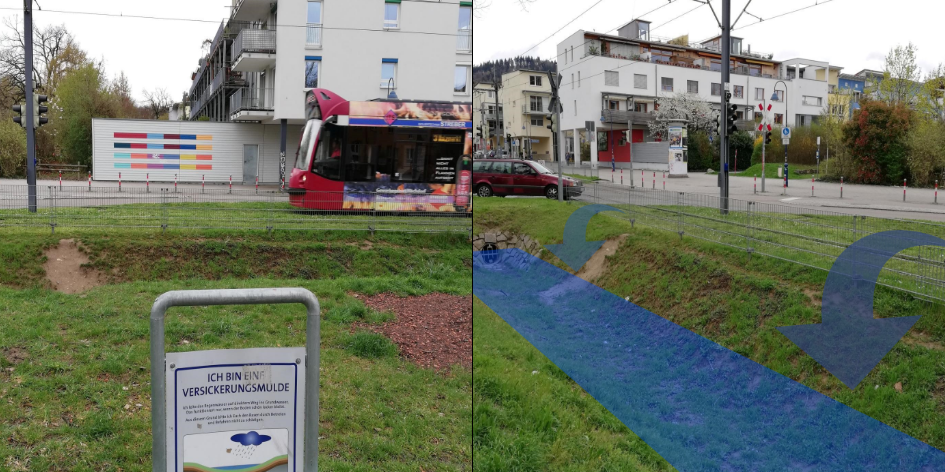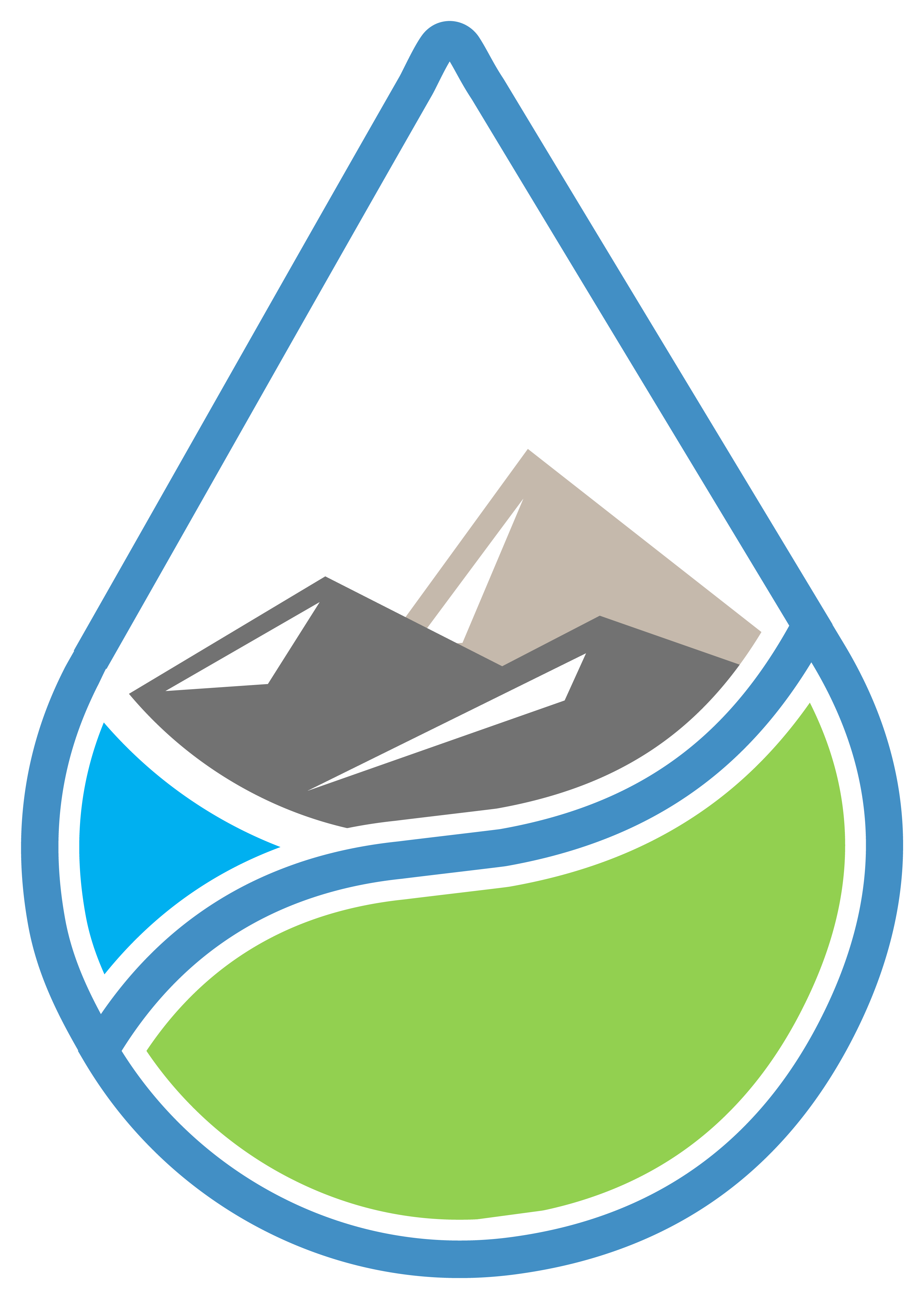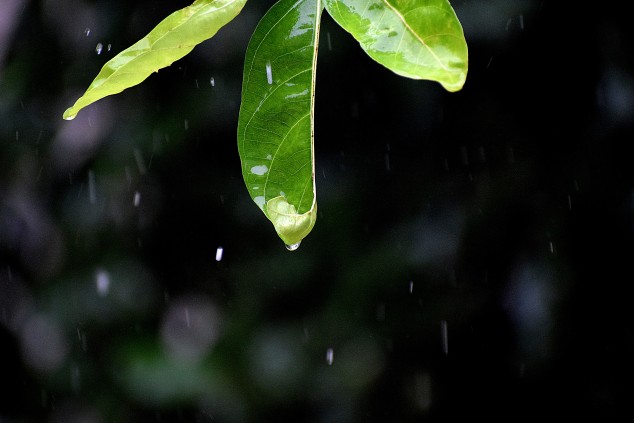How humans influence droughts
Droughts come in different “natural” stages and severities (see last newsletter: 🌧 meterological drought, 🌾 agricultural drought, 🚱 hydrological drought), but humans can exacerbate them. This effect is called “anthropogenic drought”, being defined by AghaKouchak and others (2021) as the enhancement of agricultural and especially hydrological drought through human behaviour. As climate change increases the occurence of “natural” droughts, so do those of anthropogenic origin.
For instance unsustainable irrigation during an agricultural drought leads to sinking groundwater tables. This lowering causes either less inflow of groundwater to rivers or even the riverwater infiltrating into the underlying aquifers. The result is dry rivers, or a hydrologic drought which without human activity would have sometimes only been an agricultural drought.

Another example of anthropogenic drought is the effect of increased sealing of soil in urban areas with buildings and streets. This leads to more surface runoff of rainwater instead of the natural occuring infiltration into the soil. This loss of infiltration means less groundwater recharge, thus contributing to lowered groundwater tables. A way to decrease urban runoff and increase infiltration is this weeks topic:

Rainwater Harvesting
Rainwater harvesting describes practices and infrastructure which aims to store and/or infiltrate as much rainwater as possible. This includes:
- 🚽🧼👕 Storing rainwater for houshold appliances like dishwasher and toilet flushing. This decreases the demand for fresh tapwater which would otherwise go down the drain directly. Also if using biodegradable detergents, the resulting greywater can be used for watering your garden (more on greywater usage in a uture newsletter).
- 🪴🌿🌳 Using rainwater for irrigation of house and garden plants. This also saves tapwater and additionaly increases plant water transpiration. This causes evaporative cooling in the summer, and healthier trees which also give shade
- 🏡🛣️🏘️ (Re)designing streets and curbs so water gets funneled into swales rather than runing of into the sewers. In planted swales, this runoff water nurishes trees and plants plus excess water infiltrates and feeds the groundwater
Example 1: Dunbar/Spring in Tucson, Arizona, USA

In the arid Tucson, Arizona in the Dunbar/Springs neighboorhood exists probably the most prominent example for rainwater harvesting. There Brad Lancaster, author of “Rainwater Harvesting for Drylands and Beyond” and some of his neighboors have totaly transformed their district from a dry wasteland to a lushly vegetated oasis.
By cutting street curbs and excavating trenches, they redirected street runoff from the gutters towards planted swales. During storms, rainwater accumulates in these ponds and slowly seeps into the soil, irrigating the vegetation and replenishing groundwater.
For some stunning before – after pictures visit Brad Lancasters website. Also if you are interested in his story, I can also recomend this documentary by Kristen Dirksen.
Example 2: Vauban in Freiburg, Germany
When building Vauban, one of the newest districts in Freiburg, Germany, city planners and architects also included rainwater harvesting principles in their designs. Here, roof and street runoff is either directly infiltrated in the front or backyards, being absorbed by trees and plants, or redirected into swales where excess rainwater infiltrates or evaporates. In some buildings, rainwater is also collected in cisterns, used for flushing toilets and washing clothes.

An easily realisable solution
In relation to last weeks topic of managed aquifer recharge, rainwater harvesting is way easier to realise. Its principles can even be practiced on multiple levels:
- 🏡Homeowners: While using rainwater for household appliances needs some changes to installed piping, in new houses this is definitely a viable option, plus not using tapwater also saves money. Some states even give incentives for using rainwater. In Germany for instance, when you can prove your roof runoff infilrates on your property, your drainage fees reduce.
- 🏙 City Management: When designing new districts, including these principles builds more ressilient neighborhoods which are better adapted to climate change. But even in existing districts, lowering curb stones around tree pits and green strips can save cost for watering urban trees and relieve sewer systems
Rainwater harvesting does not only help us adapt to droughts and more resillient to climate change but also makes cities more flood-proof, but more on that in a future newsletter.
Thank you for reading!
Also check out the preceeding WaterWednesday newsletters 💧
Sources
AghaKouchak, A. et al. (2021) “Anthropogenic drought: Definition, challenges, and opportunities,” Reviews of Geophysics, 59(2). Available at: https://doi.org/10.1029/2019rg000683.
Lancaster, B. (no date) Rainwater harvesting for drylands and beyond by Brad Lancaster, Rainwater Harvesting for Drylands and Beyond by Brad Lancaster. Available at: https://www.harvestingrainwater.com/ (Accessed: April 1, 2023).
Nachhaltiger Modellstadtteil Vauban (2016) Zurück zur Startseite. Available at: https://sdg21.eu/db/nachhaltiger-modellstadtteil-vauban (Accessed: April 1, 2023).
Quartier Vauban (Freiburg) – Nachhaltige Stadtentwicklung (no date) Diercke Weltatlas – Kartenansicht – Quartier Vauban (Freiburg) – nachhaltige Stadtentwicklung – 978-3-14-100700-8 – 71 – 5 – 0. Available at: https://diercke.westermann.de/content/quartier-vauban-freiburg-nachhaltige-stadtentwicklung-978-3-14-100700-8-71-5-0 (Accessed: April 1, 2023).


Comments are closed